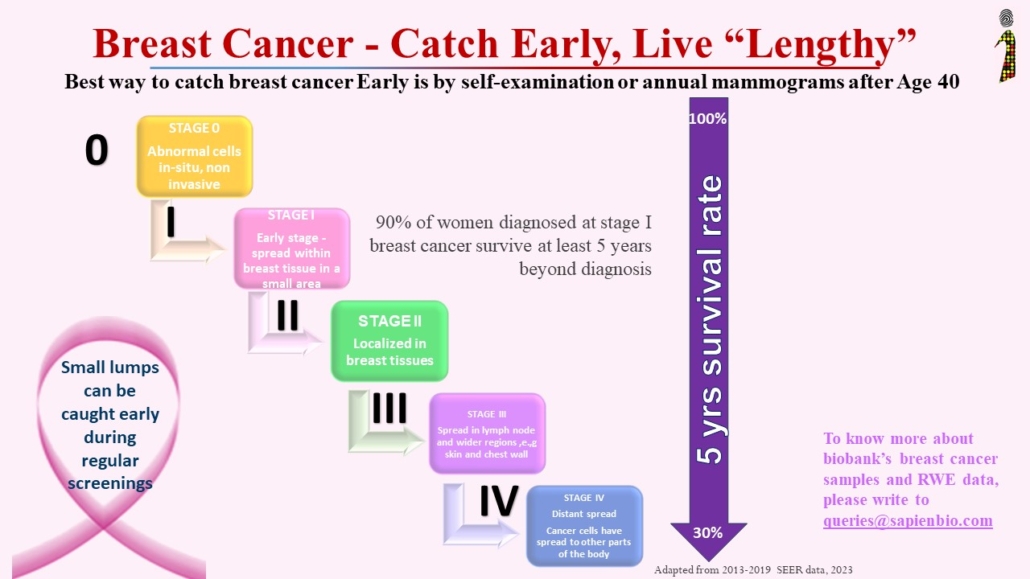Staging of Breast Cancer is Important

Advancements in #tumor biology and prognostic #biomarkers, such as the estrogen receptor (ER), progesterone receptor (PR), HER2/neu, and Ki-67, have empowered clinicians to understand why patients with similar stages have significantly different outcomes. The 8th edition of the American Joint Committee uses nine stages (0, IA, IB, IIA, IIB, IIIA, IIIB, IIIC, and IV) based on anatomical staging, taking into account the extent of the primary tumor (T), the status of the regional lymph nodes (N), and metastasis (M), and incorporates biomarkers (histologic grade, ER, PR, HER2 expression, and multigene panels) into the traditional anatomical TNM staging. The higher the number, the more advanced the cancer is.
Staging allows for a more precise and accurate stratification of patients, impacting survival outcomes, with >90% survival over 5 years in Stage I breast cancer (from SEER database).
In addition to Stage, knowing the Grade of cancer is also important, to identify patients at risk for adverse outcomes who may be eligible for (neo)adjuvant therapies. There are three grades of malignancy (Grades 1-3), based upon the differentiation of tubule formation, pleomorphism, and “hyperchromatosis” or mitotic nuclei. The higher the number, the more aggressive the cancer is.
Simply put, Staging means how big the cancer is and whether it has spread. Grading means how abnormal the cancer cells and tissue look under a microscope.

Leave a Reply
Want to join the discussion?Feel free to contribute!